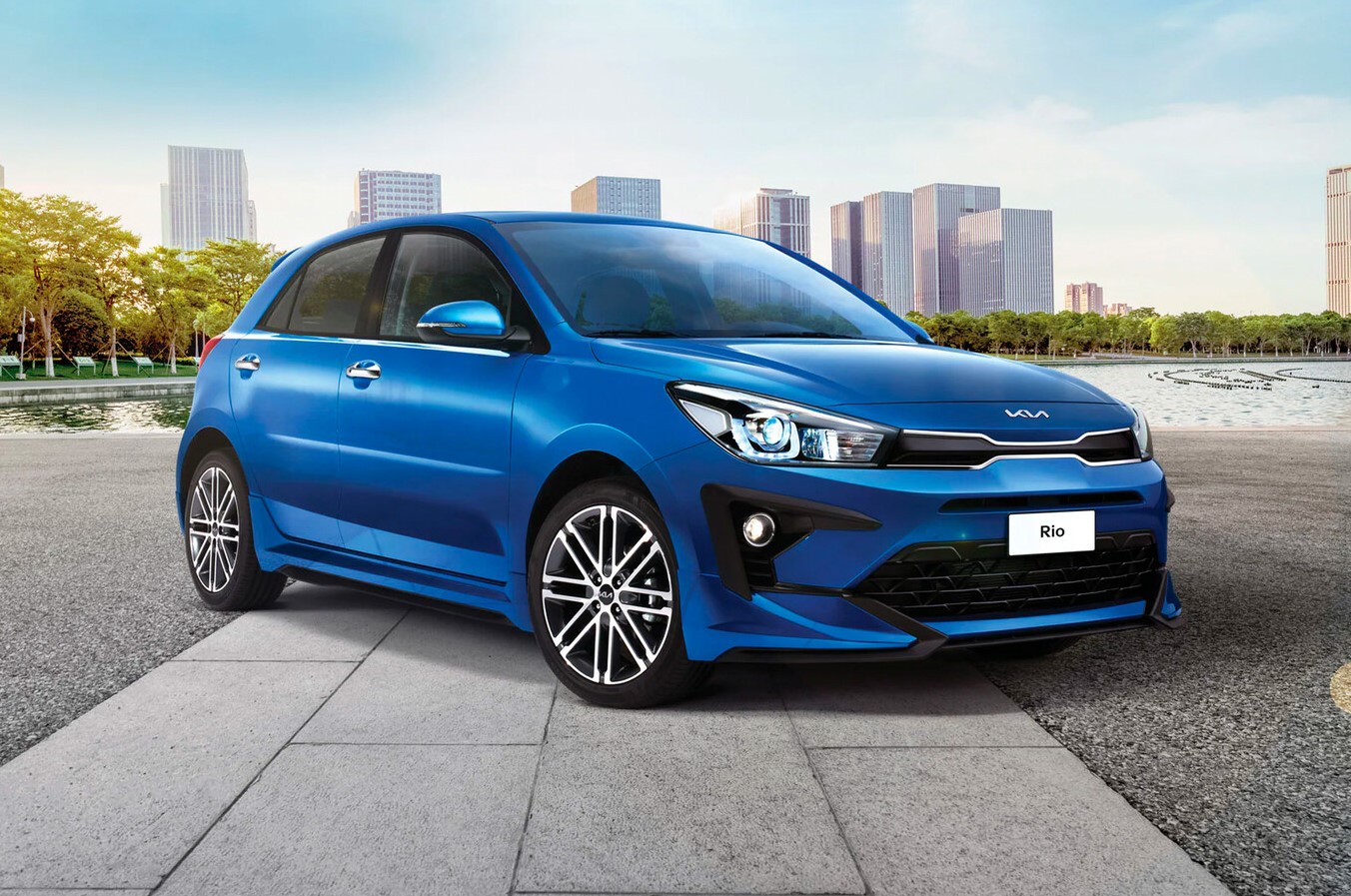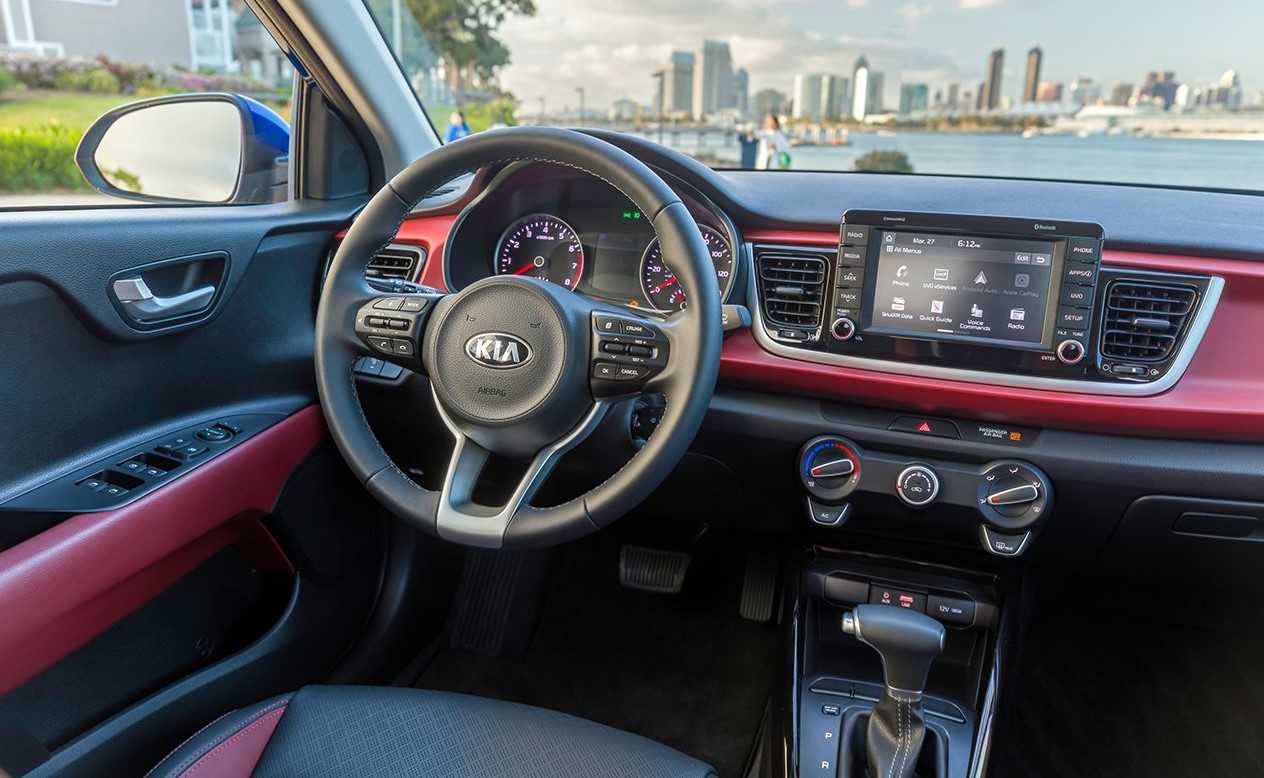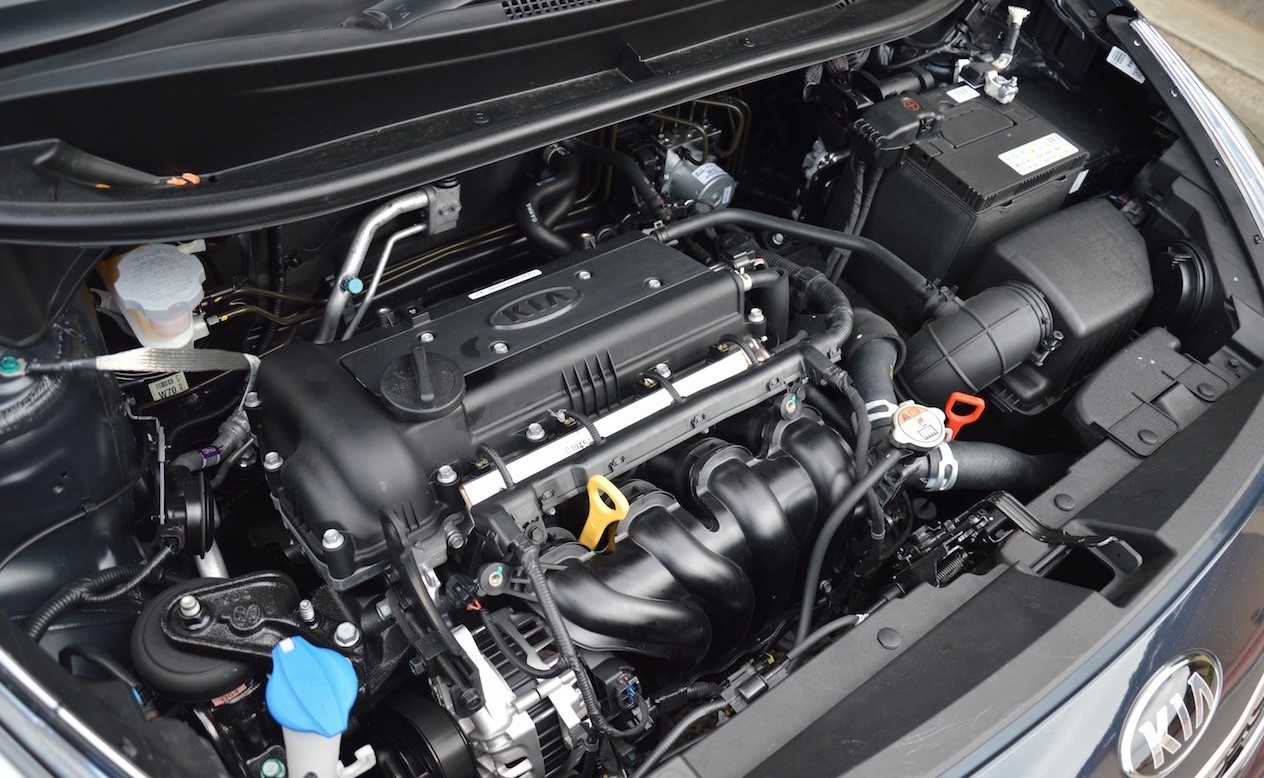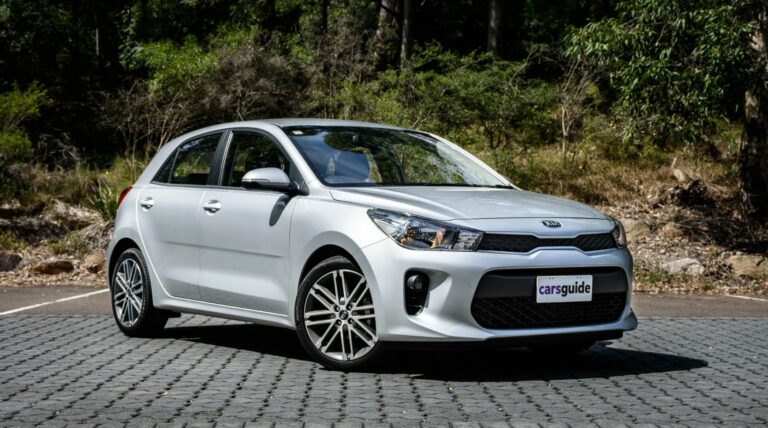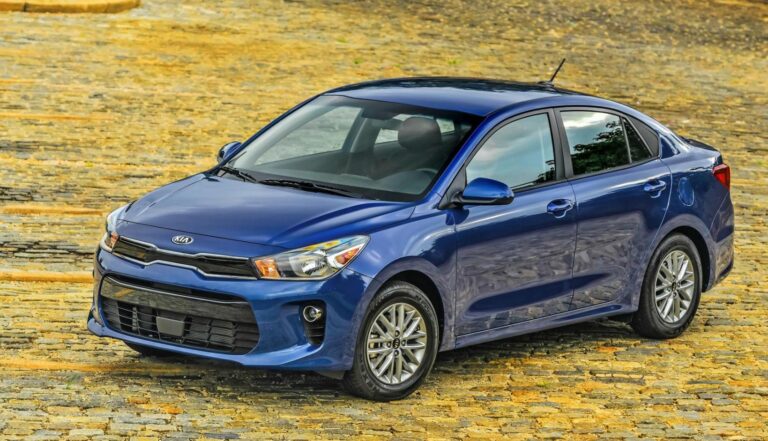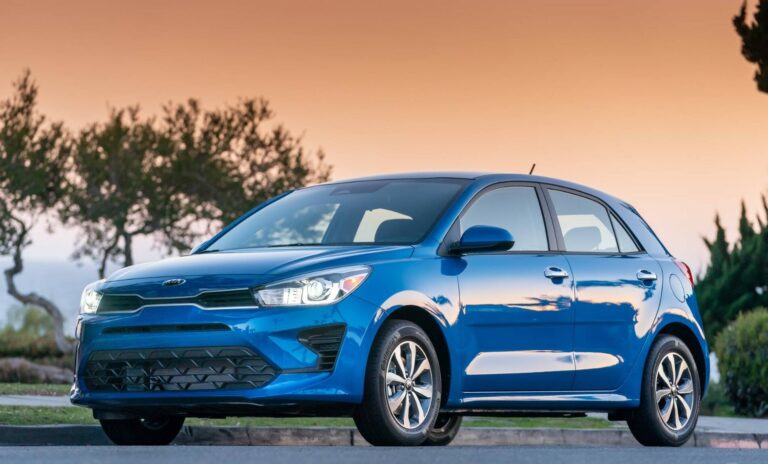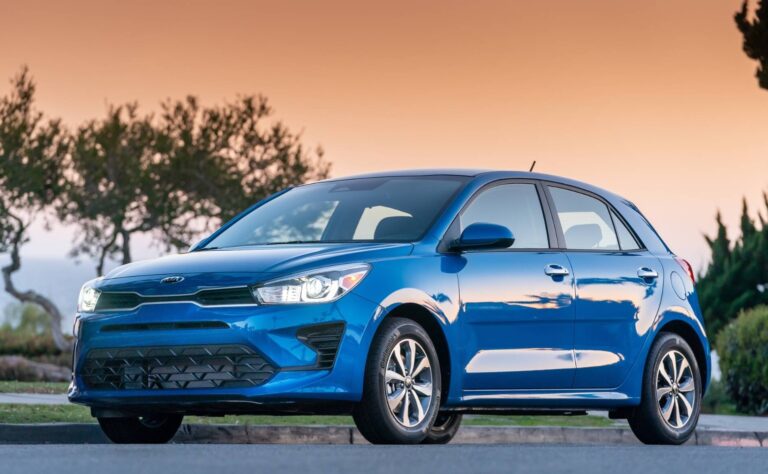2027 Kia Rio Review, Specs, Configurations
2027 Kia Rio Review, Specs, Configurations – The 2027 Kia Rio arrives with a bold new persona that defies its subcompact status. Kia has given the Rio an edgy redesign that blends sharper lines with sleek aerodynamic touches. The front fascia is dominated by a wider “tiger-nose” grille edged by ultra-thin LED headlights and jewel-cut DRLs. Below, a sculpted lower bumper integrates active air curtains improving airflow efficiency.
From the side, character lines flow toward a sporty fastback-like rear, giving the Rio dynamic proportions usually reserved for class-above rivals like the Civic or Corolla. Kia made sure this was a target redesign, not a quick facelift. 2027 Kia Rio Review
2027 Kia Rio Redesign and Update Plan
Exterior & Interior
Visually, the 2027 Rio makes a statement that demands a second look. Exterior paint options include new vibrant shades like Prism Teal, Ember Red, and Silverchrome Gray, paired beautifully with gloss-black roof and pillar accents. The fastback influence continues at the rear with a dual-layer LED light signature straddling the trunk, emphasized with a gloss‑black tail spoiler. Standard features include power‑fold mirrors and flush door handles, both enhancing sleekness and practicality. With its elevated ground clearance and side skirts, the Rio walks a stylistic line between hatchback and crossover.
Inside, Kia aimed for unexpected comfort and materials quality. The cabin features soft-touch panels across the dash and doors, contrasted with satin‑chromed trim and ambient lighting options in four hues. The standard seat materials are Perforated Syntex; upper trims offer faux‑leather upholstery with heating for both front seats. Kia also included rear seatback pockets and larger door bins to add real-world utility. The redesigned steering wheel hosts an updated voice-recognition button plus responsive haptic feedback, integrated into a thin 10‑inch infotainment screen that hovers above the dash like it’s in a higher segment.
Kia’s goal was to feel upscale without removing character from the Rio. A premium Bose 7‑speaker system is optional and tunes the acoustics to minimize chatter—despite the subcompact’s smaller cabin. Additions such as wireless charging, dual USB‑C ports front and rear, and a digital key integrated with your phone make the experience feel modern. The Rio also supports over-the-air software updates for infotainment and safety features. In short, the interior doesn’t just look good on paper structure—it operates and feels like a car well above its usual standing.
Beyond the visual, Kia revamped the platform. The Rio now rides on an enhanced version of the latest K-platform, offering a longer wheelbase by about 2.5 inches and larger wheel arches that accommodate either 16‑ or 18‑inch alloy wheels. Structural reinforcement in the A‑ and B‑pillars improves both passive safety and body stiffness. Engineers also gave the Rio a lower center of gravity thanks to optimized suspension geometry—an uncommon feat in this segment. Every update in chassis and structure speaks to Kia’s ambition to deliver a drivable, grown-up subcompact.
Underbody upgrades include a new lightweight but rigid floorpan and refined suspension tuning. The front MacPherson struts and rear torsion beam are retuned for improved ride comfort without sacrificing poise. Electric power steering is more direct, with better feedback and tighter ratios. Kia also added acoustic dampening dampers behind fenders and enhanced windshield insulation, tackling road noise—a frequent criticism of small cars. Taken all together, the 2027 Rio is more than a budget ride. It’s a refined package with a premium driving spirit in a city-sized dimension. 2027 Kia Rio Review
2027 Kia Rio Specs
Engine & Performance
The heart of the 2027 Kia Rio is an all-new 1.5-liter turbocharged inline‑4 engine paired either with a 6-speed manual or a new smooth-shifting CVT. Output is rated at 160 horsepower and 180 lb‑ft of torque, a solid upgrade over the previous naturally aspirated 1.6-liter. The turbo engine delivers strong pull from low RPMs and responsive acceleration through the rev range, eliminating the lag common in older small-car engines. Kia tuned the throttle mapping to offer more linear acceleration in urban settings, giving drivers more confidence in stop‑and‑go traffic.
Complementing the engine is a retuned chassis and tuning suite with Drive Mode Select. Choose Eco for tighter tuning that favors fuel economy, Comfort for daily smoothness, or Sport for sharper throttle response and firmer steering feel. Kia improved the suspension with new hydraulic springs that reduce mid-frequency rebounds and improve ride composition. Handling gains are perceptible; minimal body roll and an eager steering feel make the Rio surprisingly fun on twisty roads. It’s clear this isn’t an exercise in frugality—it’s a statement of refined performance.
Behind the wheel, the Rio delivers an unexpectedly engaging drive. 0–60 mph arrives in just under 8.5 seconds with the manual, and about 8.8 seconds with the CVT. The engine packs enough midrange muscle to handle highway passing without constant downshifts. Kia also improved braking performance with larger 11-inch discs in the front and improved caliper heat dissipation. While not aimed at track duty, the Rio offers a balanced performance package that feels at home in both city streets and winding country routes. Drive it, and you’ll forget it’s a subcompact.
2027 Kia Rio Fuel Economy
Efficiency is front and center for the new Rio. Kia estimates 35 mpg city, 45 mpg highway, and a combined rating of 40 mpg with the CVT—among the best in its class. The manual option offers a still-notable 38 mpg combined. These results are aided by intelligent features like auto start-stop with driver override, predictive energy regeneration in braking, and eco-optimized HVAC control. An available solar roof panel extends idle accessory power and reduces wear on the 12‑volt battery.
2027 Kia Rio Safety Features
Kia tapped into its advanced safety systems to elevate the Rio beyond budget-car norms. Standard on all trims is Kia’s new DriveWise suite, including Forward Collision-Avoidance Assist with pedestrian, cyclist, and junction turning detection. The sensors and radar are finely tuned for urban environments, reducing false-positive braking events. Blind‑Spot Collision‑Avoidance Assist, Lane Keeping Assist, and Rear Cross‑Traffic Collision Warning are also included, making highway driving and parking tasks far less stressful.
Lane‑Following Assist and Smart Cruise Control with Stop & Go round out the adaptive driving suite. These systems allow hands-on steering in traffic, with the Rio gently centering itself in lanes. The team also added Rear Occupant Alert and Safe Exit Assist—valuable additions considering the Rio’s compact rear doors and family appeal. Structurally, Kia improved the arch-supported frame and added high‑tensile steel reinforcements in crash zones, validated through more rigorous side-impact and rollover testing.
Kia’s approach is practical yet modern. The Rio comes with an integrated dashcam option and live over‑the‑air updates for safety calibration via wireless data. All of these features are included even in the base LX trim, demonstrating Kia’s commitment to accessible safety. With high scores expected from Euro NCAP and IIHS, the 2027 Rio becomes a standout choice in a segment where cost too often equates to cut corners in protection. 2027 Kia Rio Review
2027 Kia Rio Release Date & Price
Pricing is keenly competitive and designed to turn heads. The base LX trim starts at $19,995. The mid-tier S with power features comes in at $22,495. The Premium UVO trim with Bose sound, heated seats, and wireless charging is $24,995. Kia’s usual generosity in offering long warranties holds strong: a 10‑year/100,000‑mile powertrain, 5‑year/60,000‑mile basic coverage, and free maintenance for the first three years.
Pre-orders opened in January 2027, with deliveries slated for March. Initial inventory hits urban centers and states requiring higher fuel-economy compliance, followed by nationwide rollout by summer. A limited 1,000-unit “Launch Edition” will be available in select vinyl wrap options and exclusive two-tone paint schemes, making it an instant collector in the subcompact segment.
